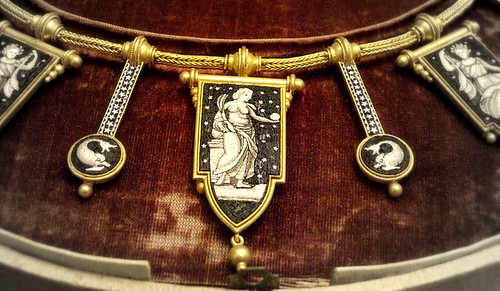Love Story or Murder Most Foul?
Rumi's "The King and the Slave Girl"

In my previous post on Rumi, I discussed what the Masnavi’s poetic introduction, “The Song of the Reed”, has to say about us, its readers.
I made four specific claims:
1) The reed and the Masnavi have important things to share with us, its readers, about love.
2) In order to understand the Masnavi, however, we must be lovers who are entirely focused on the beloved.
3) We are not currently such lovers but can be trained to become so through reading about love in the Masnavi.
4) Our transformation into such lovers, which is the same as gaining the ability to understand the Masnavi, is the real meaning and purpose of the Masnavi.
This week I’ll begin my analysis of the initial step in this transformation that occurs as a result of reading the Masnavi’s first story, “The King and the Slave Girl”.
I’ll first discuss the ways in which this story has traditionally been interpreted and then explain my own general approach to the story.
By the end of this series of posts about “The Kind and the Slave Girl”, I hope to show exactly why Rumi ends up justifying murder.
Previous Interpretations of “The King and the Slave Girl”
“The King and the Slave Girl” is a rather strange story to begin the Masnavi with.
Why would a book that well-known scholars have called “humankind’s most important mystical epic” begin with a bizarre tale that ends with a seemingly unjust murder for the affections of a girl? Why open with a narrative that describes how a king kills an innocent goldsmith in order to free a slave girl that the king may or may not be in love with, from her own love towards that goldsmith? Why begin with such a controversial narrative that would immediately raise the protest of the Masnavi’s readers? And why defend the murder?
In order to provide a reading of “The King and the Slave Girl” that solves the dilemma of the goldsmith’s murder, as well as other strange aspects of the story, many readers have interpreted it allegorically.
Such interpretations view each character and narrative element in the tale as representative of various mystical elements of the spiritual path, the interactions of which signify the unfolding of a psychological and/or mystical process that leads the human soul to a higher level of awareness.
Nicholson, for example, interprets the king as the spirit or reasonable soul and the slave girl as the sensible or animal soul that has passion for worldly pleasure (represented by the goldsmith). The divine physician symbolizes the physical manifestation of the Universal Intellect in the form of the perfect saint and director of souls, who heals the animal soul (the slave girl) of its love for the world’s pleasures (the goldsmith) so that it returns to the spiritual king and becomes united with its real love. (For those readers who are interested, a good summary of various such allegorical interpretations can be found on pages 74-77 of Rumi’s Mystical Design by Seyed Ghahreman Safavi and Simon Weightman)
The advantage of allegorical interpretations is that they provide a simple, tidy explanation for many of the difficult issues found in the tale of “The King and the Slave Girl”.
For example, at the point where the king meets the divine physician, the reader may be surprised by the king’s sudden exclamation that the divine physician is his beloved and not the slave girl. Or, as the narrator predicts at the end of the story, the reader might still find the murder of the goldsmith to be rather unsettling.
If the story is an allegory, however, such issues settle themselves as we are no longer dealing with real characters and their interactions, but with signs pointing to a mystical process.
The falling in love of the king with the divine physician should not be surprising for the reader, therefore, because the king is, for example, actually the human soul realizing its real love for its higher self (or God). And this shouldn’t disturb the reader because it is this very realization that the story is trying to point to through its allegory.
The goldsmith’s murder as well is neatly solved through this kind of interpretation.
If, for example, the goldsmith represents the world and its attractions, which keep the ego (the slave girl) from realizing its true love for the soul (the king), then it’s only natural that the world and its attractions must in some manner be “killed” in order to free the ego from its grip. This killing, then, is not really murder, but represents some sort of spiritual gnosis or even the effects of love that set the human ego free.

Problems with Allegorical Interpretations
There are, however, several issues with these types of interpretations:
-
First, the allegorical details of the story are very unstable. For example, at the beginning of the story the king appears to represent the human soul or the sufi aspirant but by the end he seems to represent God or the Perfect Man. Which is it?
-
Second, due to the fact that there is no direct evidence in the text to support one allegorical reading over another, every reader is able to come up with his or her own allegorical interpretation. But how can we tell which of these interpretations is the correct one?
-
Third, such allegorical readings do not actually solve strange aspects of the story such as the king’s sudden love for the divine physician or the unsettling murder of the goldsmith. Instead they turn these aspects of the story into a sign for something else–such as “asceticism”–that no longer threaten the reader’s interpretative stance toward the tale, and worse yet, they use concepts found outside the Masnavi to make these assertions.
-
Fourth, allegorical readings are unable to answer the question as to why Rumi chose this particular tale–a love story–for his allegory rather than another, or why he chose to use these particular elements rather than others. After all, if Rumi’s intention was to lay out an introductory allegory pointing to “the human condition” or aspects of “the spiritual path” why would he choose such a threatening one, with unsettling elements that cause his readers to so lose focus on the story’s meaning that the narrator feels the need to spend the entire last section of the story defending the characters’ actions? This question is especially important considering the fact that there are several other allegorical stories in the Masnavi that could have been used to represent “the human condition” or the “Sufi path”. For example, “The Story of the Generous Caliph” of Book One, or “The Story of the Prince to Whom the True Kingdom Displayed Itself” of Book Four, could both be wonderful allegorical tales of the human state or the Sufi path but do not contain any of the unsettling elements of “The King and the Slave Girl”. Additionally, aspects of the tale could have been changed to make it less disturbing, such as making the goldsmith out to be a morally repulsive individual deserving of death–in the same manner that the old witch in “The Story of the Prince to Whom the True Kingdom Displayed Itself” was deserving of death for her actions–or having the goldsmith die as the consequence of some bad action of his own. Allegorical readings, however, are not equipped to explain why Rumi chose to include disturbing elements in his tale.
-
Fifth, if Rumi had intended the story to be read allegorically, one would expect the narrator to offer or point to some sort of allegorical explanation for the story as he does in other Masnavi narratives. This is especially true since the narrator spends an entire section defending the story against those readers who didn’t like it. Wouldn’t the easiest defense have been that the story is not supposed to be taken literally in the first place? Instead of using such a justification, however, what’s interesting about the narrator’s explanation is that he appears to take the story literally himself. Instead of replying that the death of the goldsmith isn’t wrong because he only represents the attractions of the world, the narrator discusses the death as the killing of an actual human character without recourse to allegory. The fact that the narrator does not provide an allegorical meaning for the story, therefore, suggests that the narrator didn’t want the main interpretation of the story to be an allegorical one.
How Should This Strange Story Be Understood Then?
Rather than avoiding the disturbing and threatening elements of the tale by allegorizing them away, a more satisfying reading of the story should be able to turn these threats into essential elements of the interpretation.
It should also be able to answer the question as to why this particular narrative, and these particular narrative elements, and not other seemingly less threatening ones, are used.
Lastly, it should use elements and concepts from within the story in order to make its interpretation, rather than relying on external concepts that find no direct support within the Masnavi itself.
In order to supply such a reading, therefore, I will investigate the specific function that this narrative plays in the Masnavi as a whole. In other words I will seek to discover why Rumi has placed this particular story at the opening of the Masnavi.

“The King and the Slave Girl” Is a Litmus Test
By the end of this series of posts, I’ll show that “The Story of the King and the Slave Girl” functions as a litmus test that Rumi performs on his readers.
In this litmus test Rumi uses a complex series of narrative techniques to demonstrate the inadequacy of the reader’s interpretive strategies, and to offer love as an alternative interpretative strategy that the reader must embrace to properly understand the story and, consequently, the Masnavi as a whole.
Meaning is created in the narrative not through the reader’s mental acceptance of the Masnavi’s concept of “love” per se, but through his or her performance of that “love” by embracing the interpretation the narrator offers the reader to explain the events of the narrative.
This performance of love represents the initial polishing of the reader’s interpretive mirror on his or her path to becoming an ideal reader and lover.
And all you have to do to achieve this is agree with the narrator that the murder was justified!
Homework
I recommend reading the story again this week and thinking about the following questions:
-
Is there evidence for an allegorical reading of this story? If so where? If not, why are allegorical readings so popular?
-
What specific parts of this story do you find surprising or disturbing? Why?
-
How does the narrator defend this story? Why do you think he chooses such a defense?
-
Again please feel free to leave any thoughts or comments you have on this post, or the story in general, below.
Next week I’ll begin my discussion of the “The King and the Slave Girl” highlighting techniques Rumi uses to perform this “litmus test” on his readers.
See you next week and happy readings!

